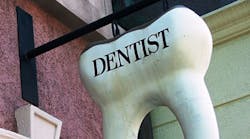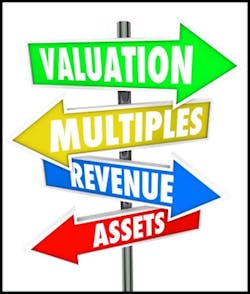A dentist’s practical guide to dental practice valuation methods
Most dentists don’t know the current value of their dental practice. Fewer know how the industry experts (accountants, dental practice brokers, and buyers) define their dental practice valuations.
How to value a dental practice for sale
Selling a dental practice might be the single biggest decision of your professional career. You don’t want to leave money on the table or get shortchanged in the process. With so much at stake, you really need to understand which dental practice valuation formula best fits your office and your market.
Some dentists think their practice is worth 1.5 times their net income, and others think it’s an average of 70% to 80% of their last three year’s collections. Both of these assumptions are wrong and don’t adequately reflect a fair market value of your practice. The value of any business is typically based on its cash flow, the risk of investment, and the return on investment for the buyer. Here I explain three commonly used dental practice valuation methods.
Income-based valuation methods
The most knowledgeable buyers commonly use income-based valuation methods—either capitalized earnings or discounted cash flows—to calculate how much a dental practice is worth. These methods are the best ways to accurately establish the fair market value of the majority of dental practices. For income-based valuation methods, income is defined as the pre-tax cash flow of your practice. Here’s how they work:
• Capitalized earnings method—The basis of this valuation method is the practice’s prior year’s (or average of the last few years) net income (EBITDA). This number is divided by a cap rate (industry standard is 25% to 31%) to get the fair market value of a dental practice.
• Discounted cash flows method—This dental practice valuation method projects 10 years of net income (EBITDA) and then calculates the net present value of that income. The projected cash flows are based on a reasonable growth rate of collections and associated practice costs each year, and then discounted by the assumed cost of capital plus a risk premium. For dentistry, this ranges from 23% to 31%.
The income-based methods factor both tangible and intangible assets of a practice, then apply a rate of return to the earnings stream. These dental practice valuation formulas work best for practices that have strong patient bases and a proven track record of solid revenue and growth. Buyers put a significant value on future earnings and a healthy, growing patient base.
Download your free Dental Practice Valuation Worksheet here!
Market-based valuation methods
The market-based dental practice valuation method relies on market data of other dental practice sales in your area. This method typically looks at historical practice collections times a collections multiplier (60% to 80%). This method can be misleading because it’s based on collections and does not take profits into account. It can be difficult to find real comparable practice sales figures. Also, you might not be comparing apples to apples.
Net asset valuation methods
The net asset method is based on the dental practice appraisal of all tangible (chairs, equipment, real estate, etc.) and intangible (practice goodwill) assets. Most dental practices don’t have the majority of their value in tangible assets.
There’s a rule of thumb for dental practice valuation: 80% to 85% of the value of a dental practice comes from practice goodwill. This method is often unreliable because it can undervalue older practices (i.e., older equipment) and it’s difficult to appraise practice goodwill. This method is useful if a practice has significant real estate holdings or if the practice has some financial issues. It should only be used as a reference point along with other valuation methods.
ALSO BY RYAN LINDGREN:Should you sell real estate with your dental practice? 3 creative options to consider
Knowledge is power
The more you know going into the sale of your practice, the better off you’ll be both financially and personally. Determining the best valuation method for your practice will help you get the most for your office when you’re ready to retire.
Download your free Dental Practice Valuation Worksheet here!
For the most current dental headlines, click here.
Reference
The ADA Practical Guide to Valuing a Practice: A Manual for Dentists. Chicago, IL: The American Dental Association; 2013. Dental practice valuation definitions











